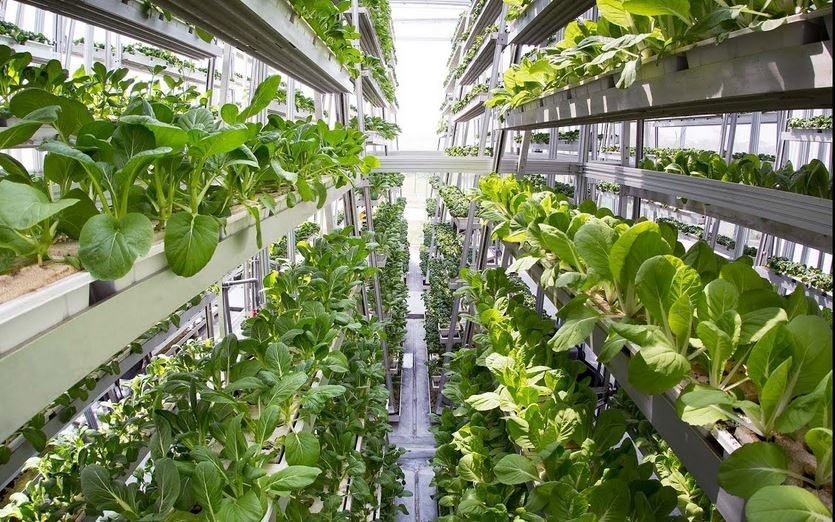If I could do any kind of work, I’d devote a good part of my week to working at a vertical farm. (Or building one myself.) A couple years ago I wrote a novel called TOKYO GREEN. It’s about a guy who abandons his high-paying job in Silicon Valley to live a more natural, beneficial life. The MC ends up in Tokyo, where he builds an indoor farm for a bunch of retirees, with the help of a rogue AI. At the time of writing the novel I didn’t know much about vertical farming. I still don’t know much about it now. But I do know I want to get involved. I’ve worked twenty-plus years coding and automating systems, and I have a rough understanding of how machine learning works. This was the knowledge I brought to writing the book, and it’s the knowledge I could bring to vertical farming today.
I’m thinking about this now because I got an invitation to visit a vertical farm in Chiba, Japan (near Tokyo Disney) in a couple of weeks, and I want to have some informed questions for them. In particular I’m interested in the computing systems and software they use, as this is the most likely way I can contribute my current skills.
In general it does not seem likely that vertical farming will offer many job opportunities, as the technology that makes these operations economically feasible is also the technology that is eliminating the need for human work. Still, I’m imagining my contribution to beneficial technology starting with the question “what kind of work would I do if I could choose anything?” I’d write, of course, but vertical farming is at the top of the list.
Vertical farming is a sustainable, cost-effective method of Controlled-Environment Agriculture (CEA). It combines tech like aquaponics, hydroponics, robotics, and machine intelligence (analytics) to grow plants indoors. I’ve also seen “urban farming” and “low-impact farming” used to describe this kind of AGTECH, but these are general terms. Vertical farming refers to the particular way of growing plants in tower racks or even sideways, on a wall.
Hydroponics is all about growing plants without soil, in a nutrient-rich solution, and one way to get those juicy nutrients is through the age-old techniques of aquaponics. There is something very appealing about creating a cyclic, sustainable ecosystem of plants and water-dwelling creatures and organisms. For example, the hydroponics system might drain its water into a catfish tank for re-circulation and watering the crops. It reminds me of when I’d siphon fish poop out of my fish tanks and use it to feed the plants. Aquaponics takes it a step further, completing the loop.
How is vertical farming beneficial? It produces fresh, hyper-local, inexpensive greens with superior flavor, using sustainable techniques. The very nature of Controlled-Environment Agriculture means the product is free of pesticides and GMO. What could be more beneficial than that?
These indoor farms are also far more productive than soil-based farming, growing thirty or more crops per season, and they use a fraction of the resources. Some common stats cite up to 100% less water, 100% less land, and 100% less shipping fuel than field-grown produce that’s delivered to stores in far-away places. It would be interesting to know the net carbon footprint of a big vertical farm operation, considering the electricity it sucks off the grid. (In TOKYO GREEN, the MC uses solar panels to run his farm.) Some indoor farms use actual sunlight, further reducing the need for electricity.
Vertical farms are on the rise. I read somewhere that the industry has grown from near nothing to US$3 billion invested in the past three years. Even if those numbers are off, the industry promises to grow even more in the coming years.
The recent ascension of vertical farming is made possible by certain technologies that have become robust and cheap enough to make this method of food production economically feasible. These technologies include perception devices (cameras and sensors used to monitor and measure plant growth), machine intelligence that processes the data produced by the perception tech, and robotics that carry out the instructions of the AI.
According to this article, Carnegie Mellon University (CMU) has developed an integrated system called ACESys (Automation, Culture, Environment) that powers vertical farming, but the only thing I saw on the CMU website about this system was an implementation of it in a vertical farm in Taiwan in an effort backed by University of Illinois. There’s nothing about what the system is on a technical level, or how it works.
CMU is doing a lot of great things with robotics and AI, with a particular focus on AGTECH. Their mission is to avoid a world food crisis by the year 2040. By “world” they mean what used to be referred to as the third world, as that’s where populations will explode. CMU is developing soil-based, high-tech farming that will enable existing farms to produce all the food they need while reducing resource usage by half or more. I’d love to dive deeper into what CMU is doing, but for now I’ll focus on vertical farming. In the next week I’ll take a look at what various vertical farms are doing around the world.

